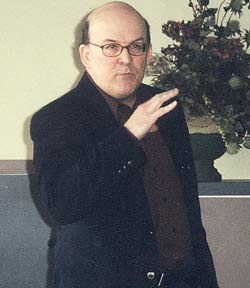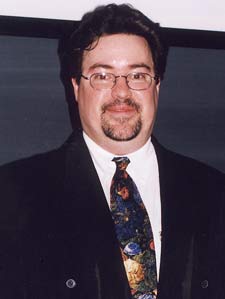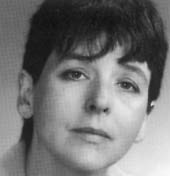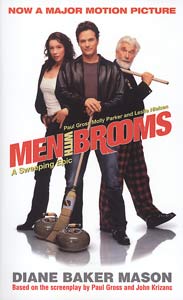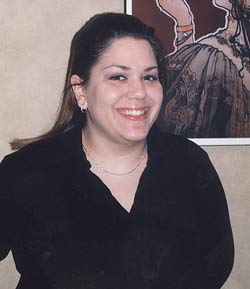|
|||||||||||||||||||||||||||||
|
|
|||||||||||||||||||||||||||||
| | |
| | VOLUME 32, NUMBER 17 | WEDNESDAY, MAY 8, 2002 | ISSN 1199-5246 | |
| | |||||||
|
 |
Astronomically Speaking: Galaxies Galore! By Paul Delaney 
Spring is galaxy season. The constellations at this time of the year are full to the brim with these enormous assemblies of stars. Unlike the winter sky which contains many fine examples of young, sparely populated open clusters, galaxies by the thousands can be found with small telescopes, each filled with 10s or 100s of billions of stars, most of which are older than the planet on which we live. The Earth, indeed our solar system, is part of a galaxy called the Milky Way, itself home to some 200 billion stars. The Milky Way is best seen from a dark location in the summer time when Cygnus and Scorpius are high in our northern skies. Even though there are in excess of 200 billion stars in the Milky Way, the galaxy is mostly comprised of empty space. From one side to the other is about 100,000 light years, an awesome distance when you remember that a light year is the distance a beam of light can travel in one year and that the light itself is moving at 300,000 km every second! Apart from the stars in the galaxy, some old and some very new, there are planets similar to those found in the solar system, clouds of dust and gas called nebula, miscellaneous debris such as meteors, minor planets, comets and of course the stellar remnants, stars that have exhausted their supplies of nuclear fuels. This later group includes black holes, white dwarfs and neutron stars. Despite all this material, it only represents one-tenth of the mass of the Milky Way. The rest of the material in the galaxy is the enigmatic dark matter, mass that we know is present on account of its gravitational signature but which has defied our best efforts to find it (so far). Given that we live within the galaxy, even its shape is hard to determine although most astronomers are quite convinced that we live inside a flat spiral galaxy. The Sun is located about two-thirds the way from the centre to the edge of the Milky Way. Amateur astronomers enjoy observing the night sky whenever it is clear. Generally, they unpack their telescopes when the mood hits. This desirable situation does not apply to professional astronomers... deep sigh! More often than not, an application for telescope observing time is lodged with the appropriate agency six months to a year in advance of an expected observing session. The observing proposal is put under intense scrutiny and then only the very best projects are granted time on a large telescope. In fact, for every one night granted of telescope time, three or four more nights could have been awarded. In short, observing time on premier instruments is over subscribed by a factor of four or five. A professional astronomer may be lucky enough to get three or four observing nights per year. Such were the circumstances that lead to an observing run in October 1992 for York astronomer Marshall McCall and his US colleague, Ronald Buta. They had been granted observing time on a modest size telescope at Kitt Peak Observatory, near Tucson Arizona. Their original target was a relatively nearby galaxy, Maffei 1 (in Casseopeia). While there are literally billions of galaxies populating the universe only a scant 70 odd galaxies exist within a sphere of radius 10 million light years of our own Milky Way. To understand the nearer galaxies gives us great insight into the workings of the more difficult to see, distant galaxies. While observing the field around Maffei 1, McCall and Buta made a rather interesting discovery: two more suspected galaxies were seen! Referred to as MB1 and MB2, these objects are just around the corner on a cosmic distance scale. Neither are anywhere near as large as the Milky Way, the larger of the 2 being only about 1 per cent as massive as our home galaxy and one-sixth the diameter. However, their proximity to us opens up many interesting possibilities for study. It also raises the question of how many other galaxies may be lurking nearby? Indeed, further observations by McCall and Buta made in November 1995 discovered yet a third object, a galaxy named MB3. To understand the local environment in which the Milky Way lives is quite a challenge. For example, our galaxy is on something of a collision course with the nearby Andromeda galaxy (if you can wait the several billion years it will take for the collision to occur). The dynamics of the local region in which our galaxy lives are very complicated and require efforts of the theorists and the observers to understand fully. You may well ask why it took so long for anyone to find MB1, MB2 and MB3. In fact, why did it take several years for the initial discovery to make it to the media? In the first place, the location of the MB pair is a very difficult area to see. Our own galaxy is full to the brim with material like dust and gas, lying between the stars. This makes it difficult to see outside of the galaxy, especially if you are looking along the plane of the galaxy. Imagine the Milky Way is like a pane of thick glass. If you look through the pane of glass as you would normally look through a window, all is well and you can see outside quite happily. However, if you tip the glass edge-on, then it becomes difficult or impossible to see out. Your view is obscured by simply too much glass. In much the same way, seeing outside of our galaxy depends on which way you are looking. The MB trio are located on the far side of our galaxy and can only be seen through the dust (and grime) of our own galaxy. McCall and Buta were scanning this region at infrared wavelengths (beyond the red end of the spectrum) when they found the heretofore unknown galaxies. Infrared light penetrates dust very well whereas optical radiation gets easily blocked. It took them two years of data reduction to convince themselves that the first "smudges" they had found were indeed galaxies. Unfortunately, these objects, despite their close proximity to us, are totally undetectable at optical wavelengths with almost any telescope currently available. You will have to settle for observing the other, more common galaxies of the spring sky. A reminder that public viewing at the York Observatory continues. Summer viewing continues every Wednesday evening until the end of August commencing at 9pm. Come along and check out the planetary alignment currently occurring. Mercury, Venus, Mars, Jupiter and Saturn are all available (briefly) in the early evening sky, as twilight ends. For more information phone the Observatory Information line at 416-736-2100, ext. 77773 or drop by the Web site, www.astro.yorku.ca/observatory . Paul Delaney is senior lecturer in the Department of Physics and Astronomy, and master of Bethune College at York University.
| ||||||
|
 |
Herren named honorary member of the Royal Irish Academy By Michael Todd 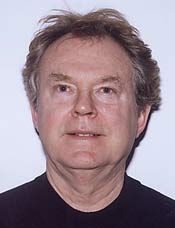
Michael Herren Michael Herren, York professor of humanities (Atkinson) and classical studies (Atkinson) and specialist in the medieval Latin literature of the British Isles has been named an Honorary Member of the Royal Irish Academy. Usually only people holding Irish citizenship can become members. "The best thing about this appointment really is that I get to put Hon.MRIA behind my name," he says. "Why is that important? Well, it's about when you go to write letters of recommendation for grad students. Your name carries a lot more weight. That can help out young scholars who are just beginning their careers." Herren, a distinguished research professor, is only the second Canadian to make the RIA's list of honorary members. The honorary designation is used for the few non-Irish members who make the list. Herren, who is also a Fellow of the Royal Society of Canada, received the RIA honour for his contributions to "Polite Literature and Antiquities". Appointments from the humanities to the RIA are rare. His citation reads: "Professor Herren was elected an Honorary Member of the Academy, in the Section of Polite Literature and Antiquities, for his distinguished scholarship in the field of Hiberno-Latin and Hiberno-Greek Studies." The proposal recommending his election reads: "Since the appearance in 1974 of his edition of the Hisperica Famina, Michael Herren has been the foremost scholar researching and publishing in the field of Hiberno-Latin and Hiberno-Greek studies. The second volume of that epoch-making edition (Toronto 1987), and the numerous articles published by him in the intervening years and since, have consolidated Professor Herren's reputation as a scholar of unique linguistic and literary talents, who has distinguished himself particularly by his willingness to tackle texts which other scholars have found too difficult or intimidating." From the Academy's point of view it is especially noteworthy that Herren has published so many valuable and original studies of the Latin and Greek culture of medieval Ireland, and thereby rescued from obscurity a range of writings which were for many centuries neglected but whose importance is crucial for the history of Irish culture in the "Golden Age" of the medieval centuries. Herren has thus pioneered the study of Latin and Greek literature in Ireland in the early medieval period, a field which has since blossomed and attracted significant numbers of newer researches, thanks in large part to his lead. By establishing the 'bona fides' of the subject in Canada and the United States, Herren also did a signal service to the study of Irish Latin (and Greek) culture outside Ireland. He thereby won for it an international status which it has enjoyed ever since, and which continues to attract newer generations of younger scholars, due in large part to Herren's continued involvement in promoting the field, e.g. at the conference of North American Medievalists, held at the University of Western Michigan, Kalamazoo, every year. The Royal Irish Academy, founded in 1785, is a society for the advancement of science and learning. Its membership includes most of the leading authorities in the various branches of science and humanities in Ireland. The library of the Academy is best known for its unique Irish manuscripts and its collections of books of Irish interest. "I've worked on the later literature of Ireland," says Herren. "Much of it is religious...things like poetry and grammar-school literature. Most of what I've translated starts in the seventh century and goes to the ninth. I've also worked on St. Patrick who's from the fifth century." Herren says what he learns as a translator and interpreter of old Irish texts is how culture was transmitted back and forth from Europe, to England, to Ireland. He has written seven books, among them a two-volume critical edition of the Hisperica Famina and a translation of Aldhelm's prose writings. Herren recently published a new critical edition of the poetry of John Scottus Eriugena and is engaged in preparing critical editions and translations of Isidore's Etymologies and the Cosmography of Aethicus Ister. Since 1990 he has served as the editor of The Journal of Medieval Latin. In the last several years he has been working in the field of ancient and medieval myth criticism for which he received a Killam Fellowship in 1995 to focus on a study of Greco-Roman mythology in the Middle Ages. In 1998 he received a Guggenheim Fellowship, the same year he was awarded a Distinguished Research Professorship. Herren has taught at York full-time since 1967. From 1982-85 he was Chair of the Department of Humanities at Atkinson. He is also the founder and editor of The Journal of Medieval Latin, a respected international journal based at York. The first and only journal of its kind in English, it has attracted submissions from the best scholars in the world. At Atkinson, he teaches the courses "Myths and their Meanings" and "The Virtues of St. Augustine", among others, and is also affiliated with U of T's Centre for Medieval Studies. The RIA was founded in 1785, by a royal charter of George III, as a society for promoting the study of science, polite literature and antiquities. It immediately set to work publishing scholarly papers, amassing a library, taking innovative steps such as the establishment of a country-wide network of meteorological observatories, and offering awards for learned essays to encourage intellectual activity. The unique collection of manuscripts, which remain in the Academy Library today, began in the foundation year 1785 with the presentation to the Academy of the Book of Ballymote by the Chevalier O'Gorman, and the members soon established a tradition of subscribing to purchase objects of archaeological importance. In this way they acquired many of the finest of Ireland's national treasures, such as the Ardagh Chalice and the Tara Brooch, as well as a major collection of prehistoric gold objects.
| ||||||
|
|
Spotlight turns on recipients of President's Staff Recognition Awards By Cathy Carlyle The three recipients of the 2001 President's Staff Recognition Awards were honoured at a dinner in April. The awards, bestowed annually, turn the spotlight on the often unsung staff at York who go beyond the call of duty in their jobs.
Nevia Jelenic, The President's CPM (Confidential, Professional and Managerial) Award
Nevia Jelenic, associate director in the Office of Student Financial Services since she started at York in 1988, is responsible for the efficient and effective administration of all aspects of government-sponsored student loan programs at the University. She also represents York in the Canadian Association of Student Financial Aid Administrators and interacts with the Ministry of Training, Colleges and Universities. The citation honouring her said, "Her professionalism has been a great asset to the University in an area that is important to so many students and...has increased in importance and complexity over the years."
This award is for an individual in the CPM association who has gone the extra mile in his or her commitment to the University and whose professionalism is a role model to other CPM employees.
Maureen Blenkhorn, The Ronald Kent Medal
Maureen Blenkhorn, budget officer in the Office of the Dean at the Atkinson Faculty of Liberal and Professional Studies, began her career at York in 1970 and her current position in 1990. She is known for both her warmth and commitment to her job, as the one who initiates and organizes social functions, and as someone always eager to take on new projects and committee work. "Much of Atkinson's budget turnaround is due to her professionalism," said her citation. The Ronald Kent Medal was established by President Emeritus H. Ian Macdonald in 1979 in memory of his driver, Ronald Kent, to acknowledge his many years of exemplary service to the University. The medal is given periodically to an employee who demonstrates remarkable service to York in ways which strengthen and promote collegiality.
Holly Pittman is a records and scheduling analyst in the Office of the Registrar who started her career at the University in 1977 in the Faculty of Graduate Studies. She has been in the Registrar's Office since 1994 and in her current position since 2000. One of her responsibilities is working on Voice Enrolment Help Line, assisting students who have difficulties with the York Enrolment System. Pittman is noted for displaying "professionalism and a genuine concern for students", helping them plough through complex situations. "She has a vast knowledge of University policies and procedures" and is remarked upon as a "resident expert on graduate student records". The award is given to a first-line-of-contact person, recognizing that exceptional interpersonal skills in difficult situations and knowledge of the University are essential to the work at York. This individual is effective in such situations and enthusiastically demonstrates the positive spirit of the University.
| ||||||
|
|
Campus safety - York addresses the concerns By Martha Tancock Environmental design deters crime on campus Terry Wright has reduced crime on campus by knocking out a wall here, thinning a few bushes there. His favourite story, the one York's crime prevention manager tells often and has posted on Security's Web page ( www.yorku.ca/security/docs/CrimePrevention/cpted.htm ) illustrates the worth of his training in Crime Prevention Through Environmental Design (CPTED). It was 1994. Wright had just returned from Louisville, Kentucky, where he had learned that landscaping, lighting, building layout and design can turn an unsafe area into a safe one. You didn't always have to resort to expensive, hi-tech surveillance and alarm systems to enhance security. Bethune College Student Council asked Wright how they could stop thefts from The Cage, a videogame arcade whose cash revenues helped fund student activities. Every week, it seemed, thieves were breaking into the arcade and stealing money from the coin boxes. Should the student council spring for an expensive surveillance camera? No, said Wright, relishing this opportunity to put his newly acquired CPTED principles to work. Replace the cinder-block front wall with an iron gate of vertical bars. That way you could see in and out of the arcade and the gate would look like a cage to boot! Thieves wouldn't be able to hide behind a wall and students entering the arcade could avoid surprising a burglar. It was cheaper than installing pricey technology and it was effective, too. Thefts stopped. Wright had applied a simple CPTED principle - maximize natural visibility. It improves "witness potential" and improves a person's ability to detect danger. That's why you see tree trunks trimmed to a height of six feet, hedges shorn to a level of three feet, bushes removed from around entrances. That's why architects are using more glass. The new Computer Science Building exterior walls by Campus Walk, its late-night computer labs have glass walls. The stairwells in parking structures are glazed. That's why walls and ceilings are painted white. In the parking structures, the ceilings and posts are painted white and halide lights are positioned above cars instead of along the centre aisle to enhance colour visibility and a sense of security. In the Fine Arts building, the stairwells, once covered in graffiti, now look clean and bright. New bulletin boards reduce indiscriminate postering and give the place a cared-for look. This is important, says Wright, because graffiti, broken windows, garbage-strewn, unkempt spaces indicate neglect and invite criminal activity. That's why safety and security principles should be incorporated into building design. Wright, in fact, worked with the architect of the parking structure behind York Lanes to come up with a unique safety feature - the open walkway that passes through the parking structure at ground level. A short cut for students walking between residences and York Lanes, the walkway is designed to put a safe activity in an unsafe area, another CPTED strategy to reduce crime. This customized design is featured in CPTED manuals throughout North America. Wright has also applied CPTED tactics to alter unwanted behaviour. For instance, he has suggested that residences choose lobby and lounge furniture that is bulky and shorter than a couch, so that it cannot be easily removed or used as a bed. Where there is unwanted traffic, he has come up with designs to clearly define public and private space. So, to prevent late-night revellers from continuing to party at a residence-life coordinator's open patio on their way home from the student pub, Wright designed an L-shaped wall to hide and enclose the patio. For the past eight years, Wright has applied environmental design principles to make York safer whenever he's had the chance. It's been an ad hoc approach. Now, he and crime prevention coordinator Rick Anderson are drafting a policy that would require crime-prevention-through-environmental-design principles to apply consistently to all campus construction, renovation and landscaping projects. "We've had a lot of small successful projects, but safety design really needs to start at the planning stage," says Wright. They've discussed a policy with the Sustainability Committee and will seek buy-in from Facilities, which is responsible for maintenance, and from Planning, responsible for construction. If the University Executive Committee approves the policy, Wright will be working with architects and building contractors as well. Such a policy could fulfill a basic CPTED belief that the proper design and effective use of the built environment can lead to a reduction in the fear and incidence of crime as well as an improvement in the quality of life. New luminaires improve visibility at night Four thousand lights illuminate pathways and parking lots on York's two campuses. Every weekend, security officers roam Keele and Glendon campuses recording the burn-outs, which average 100 per week. Every Monday morning, Wright studies their lighting report and decides which bulbs need replacing first. Clusters get priority over single light standards. Wherever there's an outage, Security Services ups the patrol presence until an electrician replaces the burnt-out bulb.
Believe it or not, York campus "has a low crime rate," says Ted Carroll, director of Security Services. Most of the 5,000 calls each year report thefts. Unfortunately, "when there is a serious crime, there's heightened sense of crime. It's our job to reduce that," he told an open forum on campus lighting April 3. Security Services reduces crime by deploying 45 full-time officers on foot and car patrols 24 hours a day seven days a week. A simple switch in lighting and smart environmental design are also making York safer, despite messy construction projects and tight budgets. The black-and-white "oreos" of the '60s are giving way to the amber glow of luminaires of the new millennium along sidewalks and in parking lots. Unlike the glaring, spotty light of the oreos, the luminaires cast a uniform, downward light that enhances visibility across an entire parking lot. And at 150 watts, they are more energy efficient than the 250-watt oreos. "We're getting better quality lighting with energy savings," says Tahir Mohammed, Facilities Development director. Light replacement is only a small part of a seven-year, $7.5-million plan to upgrade a rotting, 30-year-old underground cable network, says Tom Arnold, director of Parking and Transportation. Now in the fourth year of the upgrade, the university has already spent $4 million to replace the original cable system and improve lighting on campus. "We are proceeding piece by piece by piece." This summer, there will be three major lighting upgrades. The lower parking lot at Glendon College will be rewired and refurbished with luminaires. York Boulevard between Ian MacDonald Boulevard and Keele Street is being reconstructed and new lights will line both sides. And Campus Walk will be lighted from the new Computer Science Building west past Steacie, Petrie and the new parking structure to the Chemistry and Computer Science Building. Next year, much depends on whether a new tennis centre will be built south of Pond Road. Three lots are being considered for new cable and lights - Lot 6 by the Ice Gardens, Lot 5A between the track and North West Gate, and Lot 3B between the current Tennis Centre and Founders Road.
| ||||||
|
|
African music performances 'beat' all!
From left: Yinka Farinde and Robert Simms
Yinka Farinde, one of North America's top Juju musicians who is with the group The Juju Beats, and Robert Simms of York's Department of Music, performed at an end-of-term event organized by the African Studies Program, Department of Music and the Master of Founders College. Juju is Nigerian music created by the Yoruba people of southwestern Nigeria, and Farinde has been at the forefront of introducing it throughout this continent. Later in the event there was a demonstration of Nigerian textiles designed by Farinde himself. Simms, an ethnomusicologist and multi-instrumentalist specializing in Middle Eastern and West African traditions, entertained the audience by chatting about the Gambian tradition of oral story-telling, all the while playing on the kora (Manding harp). Also performing was Isaac Akrong, renowned dancer/drummer and choreographer, who is a graduate of the University of Ghana School of Performing Arts and now taking a master of dance degree at York. Akrong has given many captivating dance workshops and master's classes in North America, Europe and Africa.
| ||||||
|
|
Muddy York to September 2003
Building continues in earnest this summer at Keele campus as York prepares for the double cohort in September 2003. Crews are erecting two above-ground parking structures, the Schulich School of Business/Executive Learning Centre and the Technology Enhanced Learning Building. They will also start laying the foundation for the new Atkinson College Residence. For details and a map, see
www.yorku.ca/fpc/facdev/Current.html
.
Road work may disrupt on-campus pedestrian and vehicular traffic along:
* Sentinel Road, where new transmission lines will be buried to supply York with more power to meet the needs of the expanding campus.
* Arboretum Lane, which will be widened to carry heavier traffic in and out of the new Parking Structure 2.
| ||||||
|
|
Board of Governors Non-Academic Staff election: Candidates Statements
MARILYN ABRAM
To be part of the Board of Governors is an important responsibility. Over the past 19.5 years at York University, I have been a member of the negotiating team for the YUSA/APUY Collective Agreement on six occasions. My volunteerism at York has included assisting the Health Education Health Fair for the past five years in procuring donations and setting up the volunteer room; planning and coordinating a panel on Breast Cancer for the York community; organizing speakers, promotion material and newspaper and magazine reviews for Holocaust Week and assisting in the coordination of United Way activities. Outside activities include being a board member of the Marvelle Koffler Breast Centre to assist in their fundraising marathon race each September; board member of the Jewish National Fund in the capacity of fundraising and former co-editor of their quarterly newsletter; member of the Friends of Simon Wiesenthal Centre which provides education for the community on matters of tolerance, justice and human rights.
I feel my involvement within York University as well as in the community has given me the necessary skills, experience and knowledge to be an effective and valid member of the Board of Governors.
ANDREA DELLA-ROSSA
My connection with York started in 1977. Over the last 25 years I have been a full-time student, a continuing education student, a ball player in the York Slo-Pitch League, and a full-time employee since 1996. I have studied, played and worked with fellow students and co-workers alike. By working in the Purchasing and Contract Administration Department, I have had the opportunity to work with many people across the University on a wide array of projects. This diversity of work and people continues to provide me with an excellent education in the complexities that the University community deals with on a day-to-day basis. To serve on the Board of Governors is an opportunity to draw from these varied experiences and provide meaningful input to how York operates and innovates to the benefit of us all. I welcome the opportunity and seek your support.
GIULIO MALFATTI
I am a candidate for the open non-academic position on the Board of Governors of York University.
I have been employed at York University for over 10 years. During this time, I have served as a YUSA/APUY union steward for over seven years, helped negotiate three YUSA/APUY Unit One Collective Agreements and have been a member of the All-University Committee on Pensions and the York University Pension Board of Trustees for five years.
The Board of Governors has the final decision over all the important issues, (parking, pensions etc.), which effect each and every York University employee, regardless of affiliation. I believe that I have the experience and ability to effectively represent all non-academic staff on the Board of Governors and would welcome the opportunity to do so.
AL SCRAGG
Representing the issues, concerns of the
non-academic employee groups to the Board
of Governor's is an extremely important
and necessary role. As we approach the double cohort and its resulting difficulties it is imperative that our voice is heard.
These decision makers must understand that we the employee's that deliver the service to these additional students must be allowed to have some impact on the decisions that are being made.
As a former president of YUSA, trustee of the York Pension Fund, a member of University Senate, and two years as a member of the Board of Governors I believe I have the insight, knowledge and experience to make sure that our issues, our concerns are heard.
I would be honoured to represent all CPM, CUPE, IOUE, YUSA and YUSA 2 employees to the Board of Governors.
| ||||||
|
|
From 'unforgiving' Latin teacher to understanding administrator - Deborah Hobson
Deborah Hobson, soon to leave her position as vice-president enrolment and student services to embrace life of a different sort in retirement, took time one day to reflect on the many roles she has played at York, from when she began as full-time faculty in 1967 to today. The story she crafted of those years was a frank one, in which she described herself in the early days as "an unforgiving Latin teacher who would penalize people for handing in essays late". As she entered the world of administration, she began to view students in a new light, recognizing more of the whole person. Hobson says the last five-year chapter of her life at York has been "the happiest time in my professional life".
"Oh yes, things have certainly changed at York since I started," she said with her customary ringing laughter. "You used to get mud up to the backs of your legs in those days, when York was new and so much was under construction. Of course, in those days you wore pantyhose, not trousers!"
Other things have altered, too. Hobson's voice filled with passion. The diversity of York students "is one of the characteristics of this University. I really feel strongly that York is doing something profoundly important for the future of Canadian society. We are providing a quality education for people from all over the world for whom this is the fulfillment of not just their dreams but their families' dreams."
Over the years, she has gone from being a professor of classics and humanities in the 1960s to master of Vanier College in the mid-1980s and associate dean of arts from 1986-1991. Even as she stepped into administrative roles, she never lost her love of working with and for students.
"It was when I was associate dean of arts that I first began to get a sense that I had a shtick about students," she said. It is also when she began to build a fuller picture of the students at the University.
It has really been liberating
"Our students have huge challenges. When I started in administration I began to learn about the full circumstances of our students' lives and the incredible things they were dealing with in their personal lives as they struggle to complete their university education. When you know all of that, you learn to feel comfortable with all of them and to take them at face value for who they are as individuals. It has really been liberating for me. I have found this to be one of the most positive things about this job, for my own development."
Hobson has been known to listen "unashamedly" to conversations among students in elevators - "big guys who have earrings, tattoos and weird hair" and to join in, especially if they happen to be talking about "a great lecture they just had. I want to know who the professor was."
Instead of leaving students behind when she moved away from teaching, she has been dealing with them more than ever and on a much more personal basis. "The focus of my job here is students, and students are what interest me. I find it irritating that faculty members often talk about 'the administration this and the administration that' - as if we never had any contact with students. I have more ongoing contact with them than most faculty members do because that is my life - dealing with students."
In fact it was partly the lack of interaction with students that lured Hobson from Dalhousie University back to York in 1997. "I found everyone in Halifax very nice but I didn't feel as though I was in 'my life' when I was there. Then this new portfolio was configured at York around enrolment and student services, which was exactly the things I was interested in."
York 'takes the heat'
She said while at Dalhousie she learned something important: she did not enjoy being an academic vice-president. She also found a renewed love for York partly through the eyes of people outside of the University. "York looms very significantly elsewhere as one of the truly important universities in Canada. If people at Dalhousie are going to do something new, first they look to see if York has done it, because York is known as a leader. It is a place that pioneers, that takes the heat on things, gets out there in front."
Hobson drew comparisons between the University of Toronto and Dalhousie University - both older, well-established institutions "that others love to hate", adding, "It was very hard to get inside the skin of the other beast, because all my sympathies and loyalties are with the kind of institution that York is."
What she found most interesting about her experience at Dalhousie was her interaction with those in the medical and dental schools and the scientists, which contrasted with the culture in the social sciences and humanities at York. Scientists don't work in isolation. They work in teams and understand the importance of doing so, she explained. "And it was an insight for me. I came to realize that scholars in the social sciences and humanities work much more on their own and are fundamentally lonely, in my view."
She sings the praises of York faculty every chance she gets. When you are on a recruitment drive and you are selling the University on its strong points, you have to believe your message is authentic, she said. "The quality of teaching here is really excellent. I have always believed that. There is more creativity here in the humanities curriculum than in most people's CVs."
Why are York professors such top notch teachers? According to Hobson it is due partly to the team teaching system. "We sit in on one another's lectures in these large courses and we learn a lot. It keeps you honest. You don't want to use the same lecture each year because your colleagues will already have heard it, even if the students haven't."
"Deborah Hobson is a Yorkie and a colleague nonpareil. She is an astonishing font of knowledge - scholarly, popular, local and international - and she has a large following of devoted admirers around the world, but nowhere more enthusiastic than at
York. I've loved working with her and hope she'll remain deeply involved at York for decades to come."
- President Lorna R. Marsden
"The overwhelming sense I have of Deborah - apart from her formidable scholarly reputation and her wicked sense of humour - is the fierce loyalty she devotes to the institution she is serving. She brings passion and imagination to the task of showing the world that York is a high quality University where good students can get a great education. That is a contribution we will
sorely miss."
- Drummond, dean, Faculty of Arts
Tomorrow's another day
Hobson finds her leadership role energizing, but says there are times when she has had to make difficult decisions in the larger interests of the institutions. "With the best will in the world you put your heart and soul into something, and you have done your homework and decided on a particular course of actions. But you can't bring everyone on board. That's when you have to be able to say, 'Darn, tomorrow is another day', and go on. You have to have the self confidence to make a decision and be prepared to take the down side. Every decision you make is bound to make someone disgruntled."
At first, she found it difficult to pinpoint a particular highlight of her time at York. She did say that her final five years have been the culmination of all the roles she had played over the years "but at a new level of authority, where I have had an opportunity to make a difference."
Hobson's round of activities with students has brought her much pleasure "because I am interested in student development...and I like to offer students unsolicited advice about their life choices" - this said with the characteristic twinkle in her eye.
"Deborah is a warm, embracive, charismatic person, a collaborative leader who mentors her staff and enables them to develop their strengths. She is passionate about things she believes in, she is passionate about York. Deborah has an eye for the good
things that York does and whenever she can, she promotes them and York. And she always has.
"The first example I saw of that was in 1989. Deborah nominated the Faculty of Arts Network Advising Program for an international award. It was a program developed in the Faculty to support first-year students. She felt it was important to acknowledge the aims of the program, but also important to put York forward when it was doing great things. So she wrote-up
the project for the National Academic of Advising Association, and it won a first-place award.
"She still believes in promoting what we do well. Deborah
has been called a cheerleader. Well, she is, and I think we need more cheerleaders like her to celebrate York and its people."
- Nancy Accinelli, special advisor to the vice-president enrolment and student services
Although Hobson feels she has left a "zillion" things undone as she prepares to leave, she is deeply pleased that, under her guidance, the major student services "one-stop shopping" system was mounted on the University Web site. The success of the online service was measured early on by the dramatic drop in phone complaints from students, "though of course there is much more that needs to be done to make York user-friendly."
She is also very pleased about the reorganization of convocation ceremonies so that all students have the opportunity to graduate with their academic program this June for the first time.
With her long-range plans in the nascent stage, Hobson knows only one thing for certain: on July 1 she will be on her front doorstep in the sun with a novel on her knee and her dogs by her on the grass. "I have given my neighbours notice about this," she chuckled.
President Lorna R. Marsden will host a farewell reception on May 22 to thank Vice-President Hobson for her many contributions to the University.
York's Student Centre is proudly announcing the new, annual Student Centre Deborah Hobson Award which will be given to a person who has demonstrated a high degree of leadership to advance the interests and needs of all York students. The award takes the form of a donation to the University's bursary program made in the award recipient's name.
| ||||||
|
|
In Brief
Two large grants for 3-D research
Professor Vincent Tao, Canada Research Chair in Geomatics, and his team of researchers have received $534,000 from the Geoide National Centers of Excellence (NCE) program. Tao was co-investigator in another Geoide NCE grant competition which was awarded $450,000 in funding. He and his team will be exploring new methods of fast and cost-effective
3-D urban mapping, emergency responses and disaster management. Tao is a pioneer in developing Geospatial Information and Communication Technology (GeoICT) and is director of York's GeoICT Lab. Many of the software systems developed by Tao and his research group have been commercialized successfully and licensed to both industry and government sectors.
d is for dancing....
dDNA, [d is for dancing], a single-channel video projection by visual arts-new media Professor Nell Tenhaaf, is on view at Paul Petro Contemporary Art in Toronto until May 11th. It is part of Flow, an exhibit of video, film and new media installations coordinated by the 15th annual Images Festival of Independent Film & Video.
Outstanding physicists recognized
York-connected faculty have scooped two of seven top annual prizes awarded by the Canadian Association of Physicists (CAP). The 2002 CAP Herzberg Medal for outstanding achievement by a physicist aged 40 or less goes to Eric Hessels, a leader in precision atomic physics measurements, and one of York's Canada Research Chairs. The CAP Medal for Outstanding Achievement in Applied Photonics goes to retired professor Allan I. Carswell, president of Optech Inc., for his entrepreneurial and research achievements in lidar applications. CAP will present the awards at its 2002 Congress in Quebec City in June.
Anyone spotted Bill Clinton?
Search the crowds when you are muscling your way through York's corridors. One day you just might spot Bill Clinton. One of the University's international recruiters was on a working visit to Trinidad and found herself in the same vicinity as the former president of the United States. Not wanting to miss an opportunity to promote York, she shook his hand and deftly handed him a copy of the University's international recruitment brochure. You just never know whom you might be sitting next to on the Keele or Glendon campuses....
Stand up for Stand Together
Stand Together, a feature-length video documentary on the history of the lesbian and gay rights movement in Canada from 1967 to 1987 by visual arts-new media Professor Nancy Nicol, will receive its world premiere screening at the Inside Out Festival at the Cumberland Cinema, Yorkville, on May 19.
Teaching award for Godard
Barbara Godard has been awarded the 2001-2002 Faculty of Graduate Studies Teaching Award. The award is bestowed annually upon up to two members of the Faculty of Graduate Studies (FGS) who have displayed substantial, significant and sustained excellence, commitment and enthusiasm to graduate teaching at York.
Since she joined the York faculty in 1976, Godard has held appointments in four graduate programs (English, Social & Political Thought, Women's Studies and Études françaises), carrying a heavy load of supervision in Canadian writing, feminist theory, narratology and translation, as well as in such areas as modern drama and native studies. Her "vast intellectual reach" is known within the FGS and internationally, said the citation read when she accepted her award. Godard chaired the 1990 FGS Task Force on the Status of Women Graduate Students, co-authoring over 100 recommendations which have had an impact on the lives of students at York.
She has been called "one of York's treasures" and a "consummate teacher and mentor" to countless students, a person who "has a gift for conveying her curiosity and commitment to all she meets." Further, Godard is "almost legendary in the graduate program in English" and someone who "may well be the single most indispensable member". Students and former students described her as "encyclopedic", "flawlessly reliable" and "a model of intellectual and pedagogical engagement".
| ||||||
|
|
Finding lost memory: cognitive disorders in everyday functioning
Guy Proulx
Professor Guy Proulx, a psychobiologist who works at Toronto's Baycrest Geriatric Centre, has also been teaching in the Glendon Psychology Department one day per week for the past several years. His subjects include learning, memory, psychobiology and introduction to psychology. But those of us who attended his lecture on "Finding lost memory: cognitive disorders in everyday functioning" could attest to the fact that he could excel equally well in the field of drama and, more specifically in comedy.
Not that his topic was light-hearted nor his presentation superficial. This was a thoroughly explored and wonderfully illustrated lecture, complete with slides of photos and charts. But his dramatization of scenarios, his ear for dialogue and his humorous presentation about his own background enlivened a potentially heavy and depressing subject, one that concerns us more and more with the dramatic increase in an aging population, including problems of memory due to a variety of causes, such as accidents and illness.
Proulx realized his calling at age 17, when he worked as an orderly in an Ottawa chronic hospital. He has spent most of his professional life working with patients with brain damage and decided to complement this experience with direct contact with a different population: students who are trying to understand these problems and who are choosing specializations for the future. At the same time as being director of the Psychology Department at Baycrest, Proulx has for the past seven years brought his knowledge to Glendon students in the classroom. In addition, he has been able to arrange research opportunities at Baycrest for a number of Glendon's graduate students.
We were guided through the map of the brain, illustrating where the different types of memory and brain activity are located. We learned about cognition and cognitive rehabilitation. We found out how professionals identify the reasons for lost memory. It was reassuring to hear that there are great strides being made in treating dimentia with new technologies and medications. And in addition to treatment, some impairments in the brain can actually be repaired.
But for now, much of memory impairment is beyond repair. For these patients, Proulx's focus is on finding ways to reduce their disability, even though they cannot be cured. This is the field of cognitive rehabilitation and his examples eloquently illustrated his quest to provide a better quality of life for his patients. There are so many everyday improvements that are possible, if there is a determined effort to understand why patients behave in ways that are often disruptive. Compensatory strategies can minimize the effects of their disability and maximize their autonomy and self-confidence, whether they have stable or progressive neurobehavioural disorders. Simple examples of how daily life can be improved for sufferers of memory loss were given. We saw illustrations of the importance of clear signage in hospitals and institutions instead of contradictory and confusing ones; we learned the significance of making patients/caregivers aware of the reasons why they behave in certain ways and how they can be assisted.
Among the lecture's audience were faculty members with related specializations, intermingled with representatives of many other fields, students and members of the staff. We came away enriched and entertained.
Other lectures comprising the Spring Quartet included Michael Orsini's presentation, "From silence to voice: Engaging patients in the formulation of health policy", Tiberiu Spircu's lecture on "Analyzing sound emissions of bonobos by computer: Results and limitations" and Jacinthe Michaud's "Politique publique et genre: Le cas du Workfare en Ontario". Much credit is due to
Anne Russon of the Glendon Psychology Department, who has done such a thorough and well-organized job of coordinating this year's learned lectures by Glendon faculty members.
Marika Kemeny is public relations and communications advisor for Glendon College.
| ||||||
|
|
Be flexible in high-tech jobs, says Toronto Star speaker
David Bloor
That was the gist of David Bloor's message as he addressed students in March as part of the Toronto Star Speaker Series.
Bloor began working at The Toronto Star after he graduated from York in 1988 with a degree in economics. "I had a choice of jobs and took the higher-paying IT one," he said. "And I stayed in it for the challenge...not for the toys. If you go into IT jobs thinking you are going to get all the latest toys, don't. I am still petitioning to get a palm pilot!"
While working in the computer room at The Star he completed a bachelor of administrative studies degree at York in 1993, and is now a systems analyst with the company. "But believe me, if you leave this University with a degree in computer science, you can walk in to where I am now. I took too long because I came at the field through a different route."
Be invaluable, upgrade skills
Bloor cautioned students not to get a false sense of security once they landed a job. "Your skills are useful now but as the field changes, you might not be needed. That's why you need to keep your skills up.
"Accept whatever work is given - and become invaluable. You want to be recognized, so let other people know about your hard work. But be sure to balance what you need to do with what you want to do."
He said it's up to you to decide when and how to upgrade. Your bosses are too busy to do this. "To keep abreast of changing technology, ask for courses and see if the company will fund your training. Look for new challenges. For instance, ask to
back-up another person who's working on a project that interests you. IT is a team environment, so don't hold back from asking for advice."
When you are searching for a job in IT, you need to ask lots of questions, advised Bloor. "Find out what systems are used, and where will you fit into these systems. Will you be designing? If that's what you like and the company buys 'ready-made' systems, then that isn't the job for you."
Negotiate IT salary early
In a later question-and-answer period Bloor advised students to negotiate their salaries before they take up an IT job "because it's hard to do once you're on staff. I see new people starting work at the same salary I get now. And be prepared to take a contract position if you can't get full-time work. Get experience at that job and apply later for better jobs."
Information technology is part of every job now, he said. For example, it touches almost every aspect of The Star - from laying out the pages, enhancing and scanning photos and using digital images, to sending and receiving pictures, stories and advertisements via telephone dial-ups, fax machines and the Internet.
The final production side is also technology-driven. Newspaper pages are released and sent through a special image processor giving colour separations, then transferred to the press centre for the last part of the process. "Even the rolls of newsprint are unloaded automatically, inventoried and tracked to the press," said Bloor.
"You live in a liquid state when you're in IT. I like the way my day can change at any moment. Systems change, people come and go. It's challenging."
This portion of the Toronto Star Speaker Series was sponsored by York's Computer Science Department.
| ||||||
|
|
Curl up with Men With Brooms: Osgoode student
Diane Baker Mason's latest novel
Surely there's no one busier in Toronto than Osgoode Hall Law School student Diane Baker Mason. Although she's officially on leave from Osgoode for a year Mason keeps herself stressed by hosting a weekly CIUT radio show, writing monthly columns for the Hamilton Examiner, running an online creative writing course, being a single mom and raising two teenage sons while taking on three-month whirlwind writing projects like the book for the recent movie Men With Brooms.
Diane Baker Mason
This isn't Mason's first foray into the world of literature - she's written plays, poetry, a "literary" novel that won critical acclaim - Last Summer at Barebones (2001). But it would be somewhat ironic, she intimates, if what established her name in the higherbrow Can. Lit. circles was Men With Brooms.
Someone in Alliance Atlantis' marketing department obviously hopes you will buy the book once you've seen the movie if their print run is any indication (50,000 copies). Mason has been scrambling to do as many interviews, book signings and promo appearances as possible since Men With Brooms hit the screen. It's all part of the $10,000 fee she got for writing the mass-market paperback based on the screenplay.
"This is a first in Canada for a film," says Mason. "It's been done a lot in the States [releasing a book and film at the same time], but never here."
Men With Brooms is a romp through the lives, loves and curling rivalries of a small Canadian town (some reviewers on CBC likened it to the Canadian version of The Full Monty) starring Paul Gross, Leslie Nielsen and Molly Parker. Mason's book is based on the screenplay by Paul Gross and Jon Krizanc.
Mason was born in suburban Toronto in 1958, left home and dropped out of high school at 16, got married at 17 and had twins at 27. Later she enrolled at Atkinson and eventually graduated summa cum laude from York University with an honours degree in English literature in 1996. In 1999, she was accepted to Osgoode Hall Law School.
She says she took on the Brooms project mainly for the money "but also the experience of doing something like this. I mean, it wasn't like writing my other book, Barebones. It was an entirely different experience. I was basically writing to a screenplay that kept changing as they were filming. The movie was in progress at the same time as the book. I only had four months to do it."
Mason says she really came to York to prove to herself that she was a writer. "I always thought I wasn't good enough," she says. A York creative writing professor apparently changed her mind. "I enrolled in Stan Fefferman's class in 1991. I credit him for setting me straight. After two of his classes I knew I wanted to be a writer."
She also took classes with English Professor Don Summerhayes and ended up writing a play for him that was produced by the Alumnae Theatre and as a SummerWorks production. And next year Last Summer at Barebones will be featured as one of the books on English Professor John Unrau's Canadian Writers in Person reading series for the Atkinson Faculty of Liberal and Professional Studies.
Asked if she's worried about Brooms typecasting her as a literary flack, she says, "Look, if I get snubbed by the literary community because I wrote a commercial work, then I don't want to be part of that community."
| ||||||
|
|
Student is wired - with cyber art gallery
Vittoria La Neve
A lot of students get wired on coffee but first-year York student Vittoria La Neve is wired on her creation, the Global Gallery Web site.
What is the Global Gallery? It is an online way for youth to connect internationally through art and technology, and to get exposure for their artistic expression (art, poetry, sculpture, photographs, music, digital work etc.). The virtual gallery is part of TakingITGlobal (TIG), a Web site co-founded by another York student, Jennifer Corriero, which provides a cyberspace source of information for young people.
The Wired Woman Society recognized La Neve at a gala ceremony in Vancouver in February for having developed the Web site project and incorporated it with the TIG vision. The society, with Women in Film & Video Vancouver, honour unique people who have achieved excellence in converging fields of technology, entertainment and new media.
"As the visionary and coordinator for the Global Gallery...Vittoria is a young individual inspired and eager to explore life's opportunities. Through her vision and leadership, young people from around the world are connected through the arts and technology...." reads the citation given on the occasion.
La Neve, a high-school student in 2000, was volunteering with TIG and floundering about her future. Should she go to university? Should she become further involved with the Web site instead? In the end, she combined both dreams.
"I came up with the idea of the Global Gallery because I wanted young people around the world to be able to showcase their work and have a digital portfolio. I felt it would boost their self-esteem if they were just starting out as artists," she said. "And I saw myself continuing as a volunteer with TIG in the capacity as the gallery coordinator while I attended York. At first I didn't have advanced technological skills - but I was willing to learn and integrate my artistic ability. They (TIG) loved the idea."
La Neve, though, discovered the skills she did have. In less than two weeks she managed to put together the very first contest for the Global Gallery, and have the winners' work displayed at the Skydome when the gallery was officially launched in April 2001.
Since then she and her team have organized several Global Gallery contests online, including one called "Life As You Know It", which was sponsored by Stroke of Art in Vaughan ("an inspirational art studio for young children"). With their backing, TIG and the Global Gallery were able to award prize money to artists with the top three submissions and to hire Amanda Diletti, who is now TIG's lead designer and co-coordinator of the virtual gallery.
La Neve was delighted to receive almost 20 submissions from Ghana, thanks to one young Ghanayan, Ezekiel Annan, who had read about the contest in an Internet café, and whipped up enthusiasm for it among his friends. Their tangible works arrived and were then mounted on the Web site, and "we knew then that we had bridged the digital divide!" said La Neve. (Annan won first place.)
She wants to carry on as a volunteer co-coordinator of the gallery, running contests and finding sponsors for the Global Gallery initiative and, eventually, to have a physical space to hang some of the art she receives. Meanwhile, she continues to concentrate on her broad range of University courses in the arts, psychology, intermediate Italian and education, as well as study and teach piano at home.
Visit the Global Gallery at
www.takingitglobal.org/gallery
.
Vittoria La Neve has worked with a number of volunteer organizations, including the Ontario Science Centre Innovation Project, the Youth Advisory Council for Vaughan, music and vocal instructor for a childrens' church choir, GirlsareIT (introductory web design program for young girls), student council, and the Sharelife and Arthritis societies.
| ||||||
|
|
York Perspectives:
Exams are over for now. Glendon College greets the spring.
| ||||||
|
| |||||||
|
| |||||||
|
|
|||||||
|
|
|
| Current Issue | Previous Month | Past Issues | Rate Card | Contact Information | Search |
|

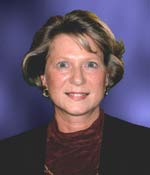
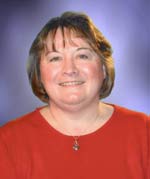
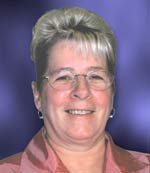 Holly Pittman, Voice of York Award
Holly Pittman, Voice of York Award
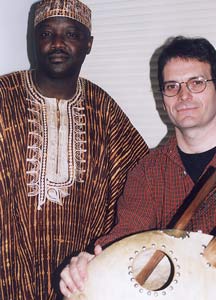

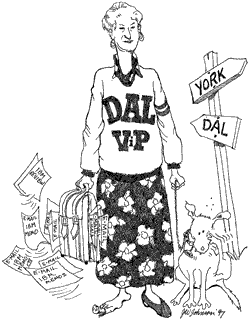



 After a few moments of thought, she said, "One of the most interesting things for me has been working on the non-academic side with a large team of people who have been in my areas, so many of them long-term York people. They are so professional, so committed, such team players. Again, having been an academic, I can say that academics are not team players because, the team you are on as an academic is the team of your discipline, which is international. But my staff here is on Team York. They are mutually supportive and they love York. They are such an inspiration. I think that, perhaps, the most exciting thing for me has been my being a part of that and to have that support and see how they work."
After a few moments of thought, she said, "One of the most interesting things for me has been working on the non-academic side with a large team of people who have been in my areas, so many of them long-term York people. They are so professional, so committed, such team players. Again, having been an academic, I can say that academics are not team players because, the team you are on as an academic is the team of your discipline, which is international. But my staff here is on Team York. They are mutually supportive and they love York. They are such an inspiration. I think that, perhaps, the most exciting thing for me has been my being a part of that and to have that support and see how they work."
